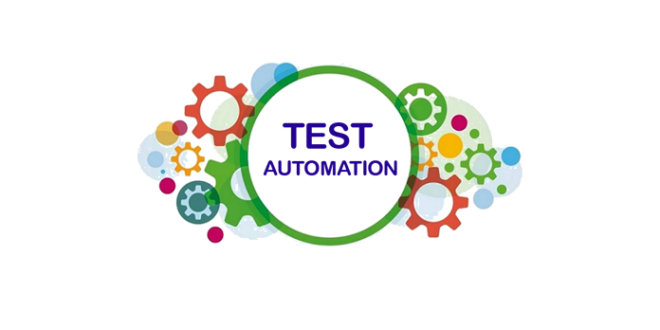From Guidebook to Automated Testing: A Comprehensive Guide to Transitioning Efficiently and Effectively
In the realm of software application testing, the shift from manual to automated procedures has actually become an increasingly vital transition for organizations looking for to boost efficiency and accuracy in their screening techniques. As modern technology proceeds to breakthrough, the demand for effective and seamless computerized screening approaches has actually never ever been a lot more pressing. The journey from handbook to automated screening is not without its obstacles, but when approached tactically and with a clear strategy in mind, the advantages can be substantial - automation testing. In this comprehensive overview, we will certainly explore essential steps and factors to consider vital for an effective shift, from the first option of tools to the assimilation of automation right into existing process. Keep tuned to reveal the understandings that will assist lead the way for a smoother and much more effective screening process.
Advantages of Automated Examining
Automated screening uses many advantages, boosting effectiveness and precision in software application advancement processes. One main benefit is the substantial reduction in testing time. Automated examinations can be run concurrently on several devices and operating systems, considerably accelerating the testing stage compared to hand-operated testing. This increased performance permits faster feedback on the high quality of the software program, allowing developers to determine and address concerns quickly.
In addition, automated testing makes sure a greater level of accuracy in spotting defects. Given that automated tests adhere to predefined scripts, human error is minimized, causing even more dependable examination results. Uniformity in screening is also enhanced, as automated examinations execute the very same actions exactly each time they are run. This consistency is essential in guaranteeing that all performances of the software are thoroughly tested, reducing the chance of unnoticed insects slipping through to manufacturing.
Choosing the Right Tools

First of all, analyze your purposes and requirements. Comprehend the range of your project, the modern technologies entailed, and the ability of your group. This analysis will certainly aid you establish the attributes and capacities you need in your testing devices.
Secondly, take into consideration the compatibility of the tools with your existing procedures and systems. Seamless integration with your existing software program growth lifecycle is necessary to ensure a smooth change to automation.
In addition, examine the scalability and flexibility of the tools. As your screening requires evolve, the tools must have the ability to adapt and suit modifications properly.
Last but not least, consider the assistance and community around the tools. When executing automated testing, robust support and an active user area can give beneficial resources and aid. By very carefully thinking about these aspects, you can select the right devices that straighten with your requirements and established the phase for an effective change to automated screening.
Writing Efficient Test Scripts

When crafting test manuscripts, it is important to consider the details demands of the software program being tested and guarantee that the scripts attend to all critical capabilities. Clear and detailed calling conventions for examination scripts and examination situations can improve readability and maintainability. Furthermore, including error handling systems within the examination scripts can help in recognizing and dealing with problems quickly.
Furthermore, organizing examination manuscripts right into modular components can improve reusability and scalability, reducing redundancy and boosting efficiency in examination script maintenance. Normal reviews and updates to check scripts are critical to equal progressing software application demands and performances. By complying with these principles, testers can produce robust and efficient test manuscripts that contribute considerably to the success of automated testing processes.
Integrating Automation Into Workflows
Effective integration of automation devices into existing workflows simplifies procedures and boosts efficiency within software advancement cycles. When including automation right into process, it is crucial to identify recurring jobs that can be automated to conserve time and decrease human error. By seamlessly incorporating automated screening tools like Selenium or Appium into the software application advancement lifecycle, groups can attain faster responses on code changes, causing quicker pest discovery and resolution. This assimilation allows for continuous screening throughout the advancement process, ensuring that any problems are determined early, leading to greater software program high quality. Furthermore, automation can be used to set off examinations immediately after each code devote, providing instant recognition and liberating testers to concentrate on more complex situations. Appropriate integration of automation tools calls for cooperation in between advancement, testing, and operations teams to establish a unified workflow that maximizes efficiency and efficiency in providing high-quality software.
Ensuring a Smooth Change
Successfully transitioning to automated screening involves thorough preparation and cautious implementation to make the most of and lessen disturbances effectiveness in the software growth process - automation testing. To guarantee a smooth change, it is vital to begin by carrying out a comprehensive evaluation of the existing my link screening processes and recognizing areas where automation can bring one of the most considerable advantages. Engaging with all stakeholders early in the procedure, consisting of programmers, testers, and job managers, is crucial for garnering support and buy-in for the find out here automation initiative
Interaction is key during this shift phase. Clear interaction of the goals, advantages, and assumptions of automated testing helps to manage any kind of resistance or worries that might occur. Furthermore, offering sufficient training and resources for group participants to upskill in automation tools and methods is crucial for ensuring a successful change.

Conclusion
In conclusion, transitioning from guidebook to automated screening supplies various benefits, including enhanced efficiency and dependability. By picking the proper devices, composing efficient test manuscripts, and integrating automation perfectly right into operations, companies can guarantee a smooth and effective transition. It is necessary to accept automation as an important possession in software program screening procedures to enhance total high quality and performance.
In the realm of software screening, the shift from manual to automated processes has come to be a progressively vital shift for organizations looking for to improve effectiveness and accuracy in their testing methods. Automated examinations can be run at the same time on several tools and operating systems, considerably speeding up the testing phase compared to hand-operated screening. Consistency in screening is additionally enhanced, as automated examinations implement the same actions specifically each time they are run.To guarantee the successful execution of chosen screening devices, the development of efficient test scripts plays advice an important role in confirming the capability and performance of automated procedures - automation testing. By following these concepts, testers can create durable and reliable test scripts that add significantly to the success of automated testing procedures